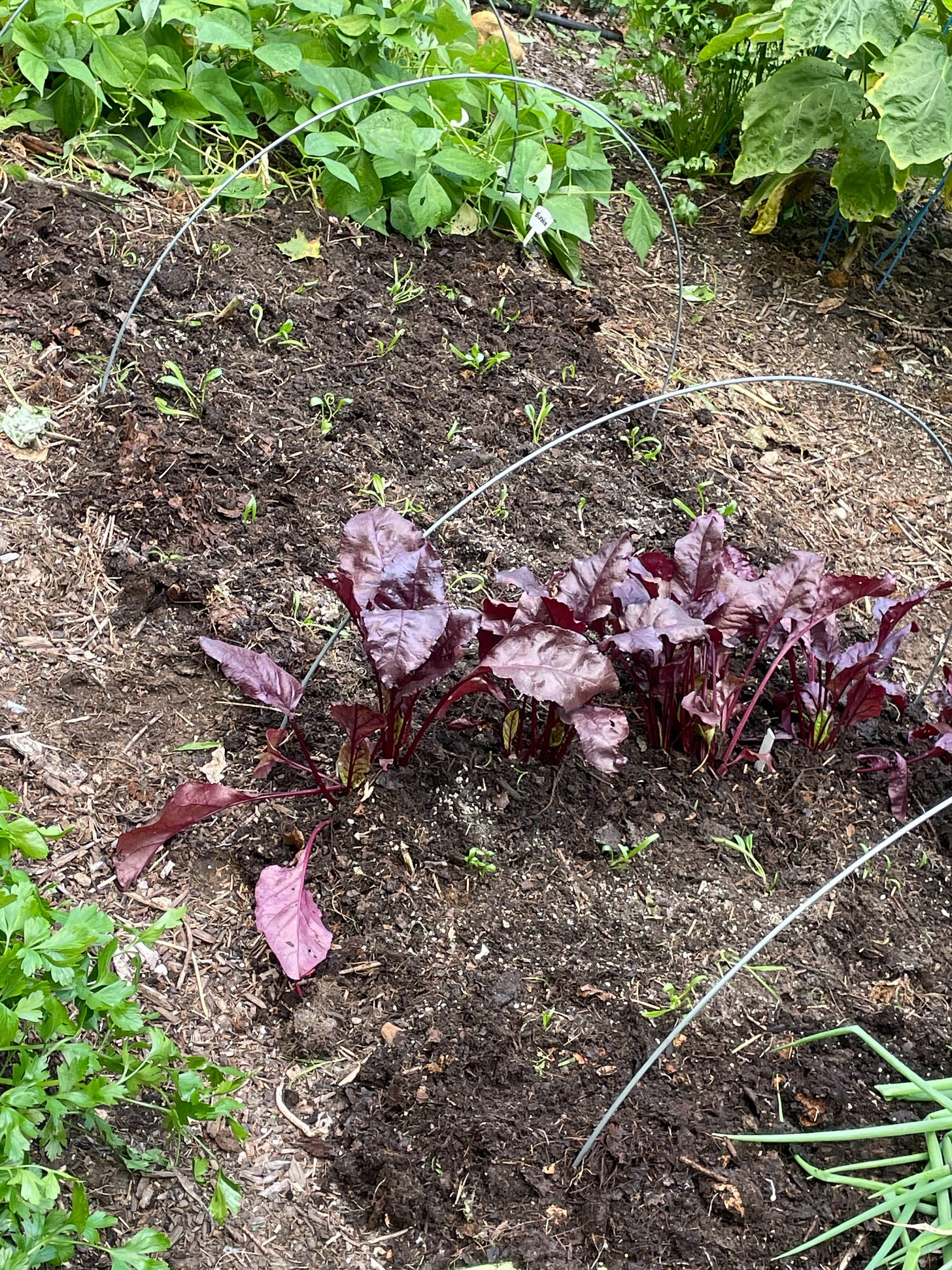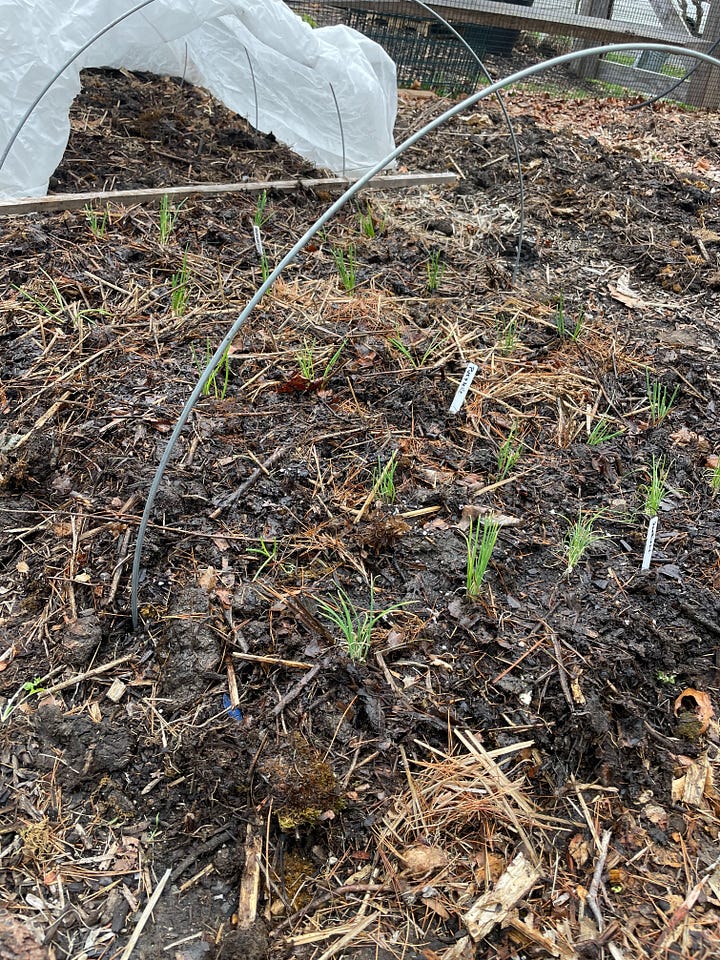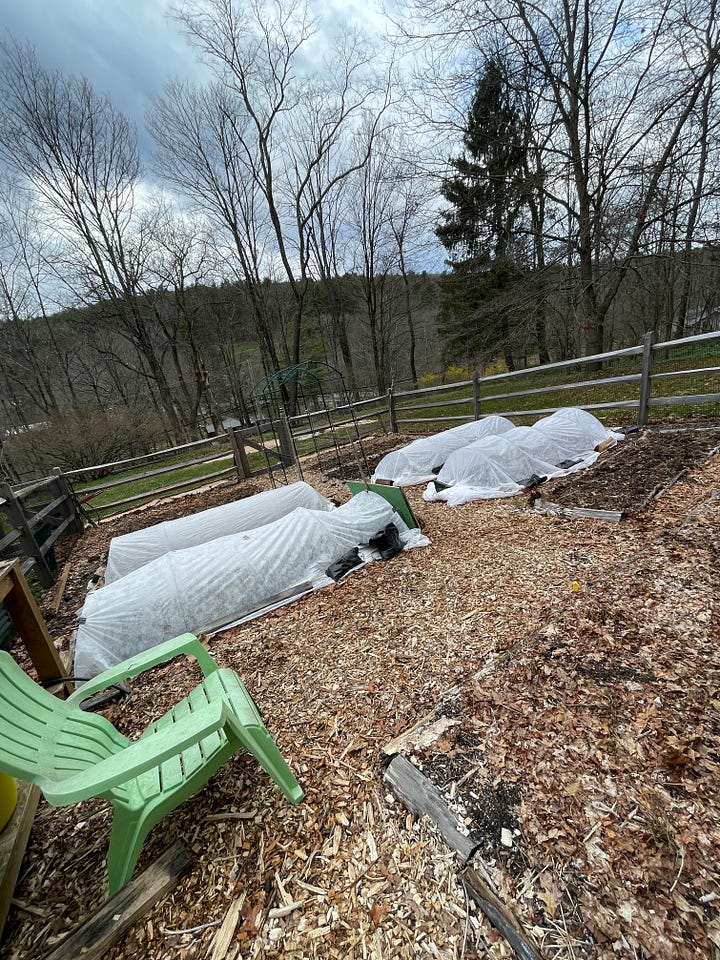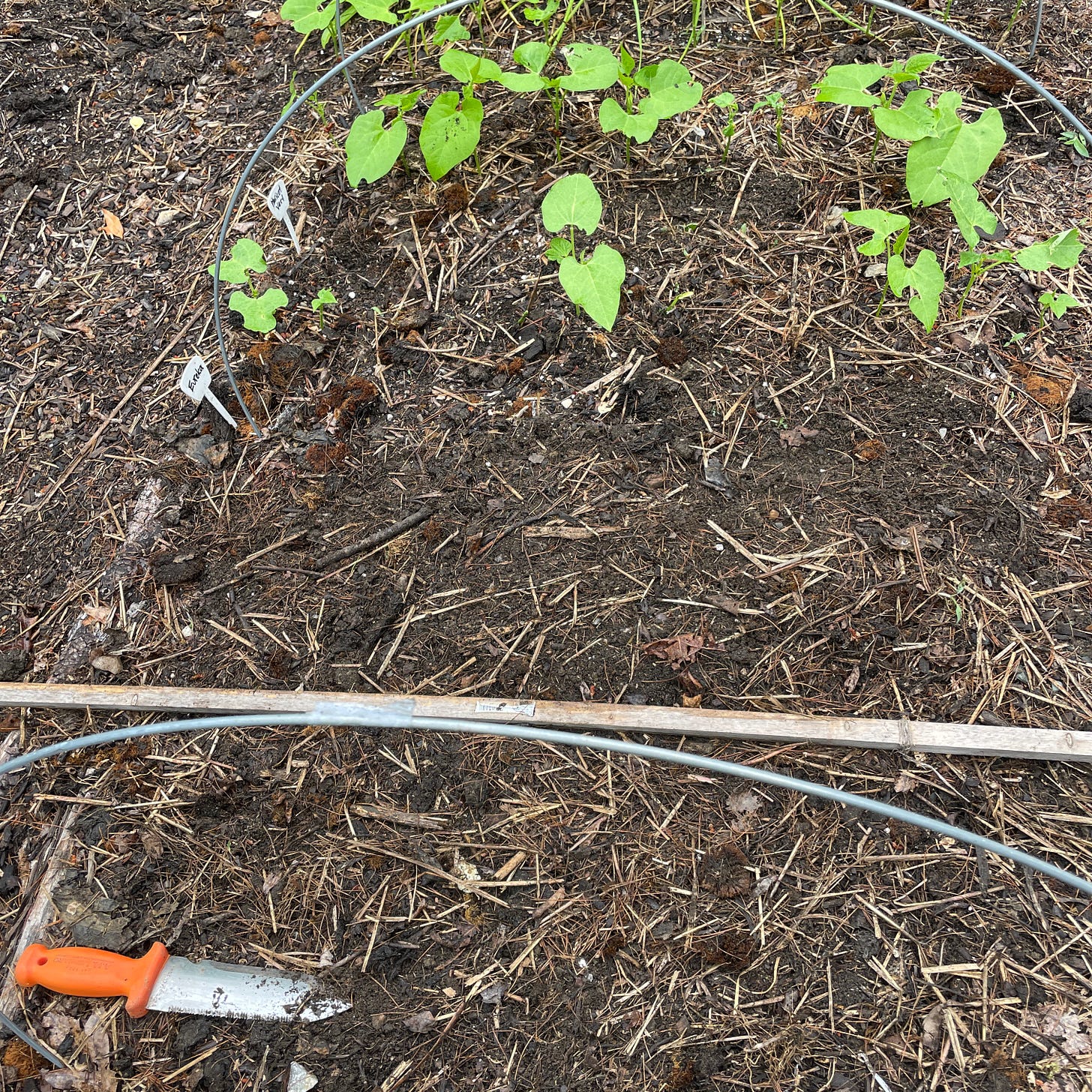Getting more out of your garden with a succession of plants
Here's how I stretched the growing season in one vegetable bed this summer.

With the vegetable garden in full transition mode from warm to cool-weather plants, I thought it would be fun to go over the life of one or our beds this year, from early spring through the summer to the cusp of fall. I admit I was surprised myself at how many times the lineup of plants in the bed changed over the past six-plus months.
Succession planting, as the practice is known, is a way to stretch the growing season from spring into the autumn, or at least until a heavy frost. It’s also a great way to reduce the amount of space you need to grow your vegetables. I know from experience when my vegetable garden outside Washington, D.C., was basically a couple 3 by 8 foot raised beds and a bunch of pots, grow bags and straw bales in the driveway.
It’s a different approach from what was once the universally accepted practice of turning over the soil in the spring, planting crops for the summer and closing things down when the cooler weather came. With a succession garden, you grow multiple plantings of vegetables from spring through fall in the same bed. The goal is to enjoy a continuous, uninterrupted flow of produce from the garden. If you’re into that kind of thing, of course!
Niki Jabour is one of many garden writers who’ve written extensively about succession planting and whose advice I’ve followed over the years. Niki, who lives in Nova Scotia, lists several tips for a successful succession garden in her aptly titled book, The Year-Round Vegetable Gardener. They are as useful to me today as they were when I bought her book 10 years ago.
Plan in advance. I wrote about planning for the fall garden several weeks ago but in short, to orchestrate a succession of seedlings into your garden you need to have a rough plan of what’s going into the garden and when. (I always reserve the right to adlib, though.) Equally important, you need to make sure you have the right seeds on hand – from the garden center or catalogs – and get them started in time for when you’ll want to move them into the garden.
Keep starting seedlings. Seed starting is not a once a year event. It’s ongoing. When you plant lettuce and other cool-weather crops in the early spring, you should already have the seedlings of your warm weather plants like tomatoes, eggplants and peppers growing and getting ready for the garden. Once they’re planted in late spring, it’s time to start seedlings for a second round of warm-weather plants or plants you’ll be putting in for the fall garden. By September, feel free to take a break! (Unless you cover your beds with suspended garden fabric or plastic tunnels and like to grow vegetables over the winter.)
Feed the soil. Successful succession gardening is directly related to the health of the garden’s soil, which comes naturally if you regularly add an inch or so of compost to the top of the beds between each planting, or at least a couple times a year. Compost benefits the soil in many ways but the three most important are soil fertility, water retention and weed reduction. In my experience, well-composted soil, rich in organic matter and the accompanying microorganisms and nutrients, can handle multiple plantings throughout the year even without the addition of fertilizer, though you can always add some fertilizer if you want.
Turn over plantings quickly. Remove spent crops from the garden immediately after harvest or as soon as their production wanes and replant the space as soon as possible. This is something I always need to remind myself to do (read this post of mine about my garden procrastination). In this regard, it’s useful if you organize your plantings in blocks, not long rows. In other words, a 9-foot by 3-foot bed would be planted in spring with a 3x3 foot area of lettuce, properly spaced, a 3x3 foot block of kale and a 3x3 foot block of arugula. These crops will mature at different rates and when one is spent, it’s easy to remove it from the garden and add a succession crop in its space while the other two crops continue to grow.
Crop rotation. This is the practice of grouping related vegetable plants (those from the same family) together and growing them in a different area of the garden in successive years, usually on a 3-4 year schedule. It means growing your cabbages and broccolis, for example, in one bed one year and planting them in a different bed the following year followed by vegetables from a different family of plants such as beets and Swiss chard the following year, and so on. The reason is to prevent a buildup of pests and diseases in the soil that may affect one group of vegetables. I’ve never strictly adhered to this, mainly because my garden is pretty small. I also try not to be too rigid about things. That said, on a general basis I try to avoid planting the same family of vegetables in the same bed year after year. I try to rotate them around the garden. Keeping notes, mentally if you’re able, written if you’re like me, helps a lot.
To this list, I’ll add one of my own, which is interplanting. It’s less of a tip and more of a related technique of succession planting. Since plants grow and mature at different rates, you can expand the amount you get out of your garden beds by interspersing fast-growing vegetables with those that grow more slowly. For example, cabbage can take months to mature while lettuce or radishes can reach maturity in weeks. So put some of these fast-growers between the slow growers. They’ll be out of the garden and on your table way before the larger, slower growing plants are ready for harvesting.

The bed I chose to describe is one of eight 3 ½ by 9 foot beds in my garden here in western Massachusetts. It’s in the garden’s southeast corner and gets 7-8 hours of sunlight a day. It’s had a run of different plants in it since April 14, when I planted it with blocks of pak choi, tatsoi, onions and scallions. It was still pretty cold, so I suspended insulating garden fabric on thin metal hoops that straddle the bed to keep the plants and soil warm.


On May 1, I interplanted turnips amid the still-growing pak choi and tatsoi, and interplanted lettuce between the rows of onions and scallions. I also added a block of broccoli rabe. At this point I was able to take the insulating row cover off for good. I picked the Asian greens and broccoli rabe during the course of May and on June 5 I spread compost where they had been growing and planted three narrow blocks of bush beans in their place. About two weeks later I planted two more blocks of beans and by this time began harvesting the lettuce from between the blocks of onions. I needed to get the lettuce out of the way to allow the onions to grow.

I’ll note here that I can’t remember harvesting the turnips, or eating them for that matter. They were clearly an unmemorable addition to this summer’s garden that may not be repeated. (Apologies to turnips fans.)
In mid-July I harvested the onions, added more compost where they had been growing and planted a block of beets and a block of lettuce in that spot. In August the bush beans had begun to run their course after producing prodigious amounts of green and yellow beans, some of which are now in quart-sized plastic bags in the freezer. After I removed the beans I added compost to the bed and prepared it for a fall crop of spinach as well as parsley, dill and cilantro. I also began harvesting the beets and interplanting the beets that remained with daikon radish seeds that I sowed directly into the warm soil.
This past week I harvested the remaining beets, providing space and light for the daikon radishes that are now up and growing well in that spot. The butterhead lettuce as well as the herbs all seem to be doing well, enjoying the warmth from the late summer sunlight and the cooler, humidity-free nights.
With any luck I’ll be harvesting vegetables from the garden through November.



